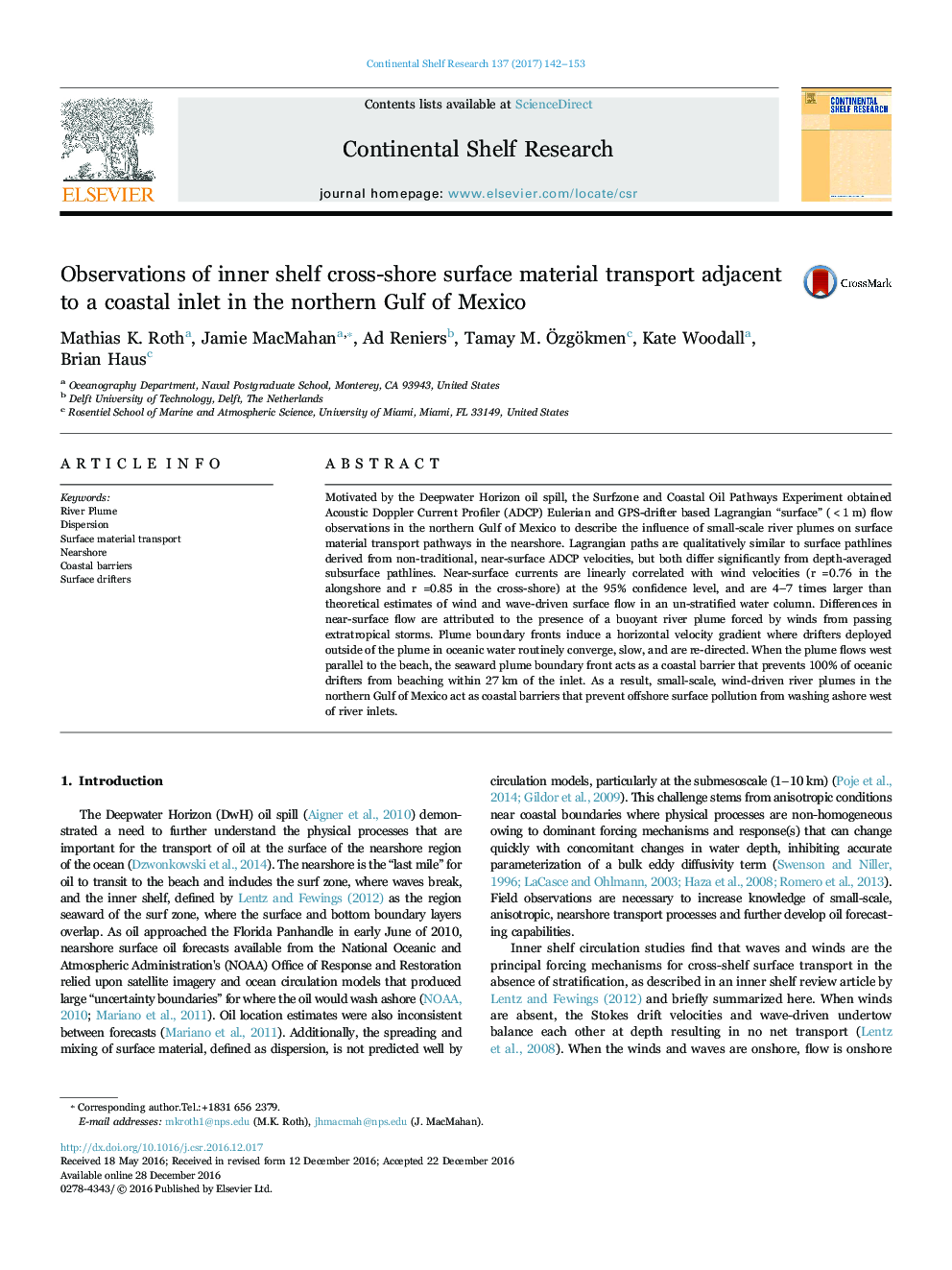| کد مقاله | کد نشریه | سال انتشار | مقاله انگلیسی | نسخه تمام متن |
|---|---|---|---|---|
| 5764590 | 1626076 | 2017 | 12 صفحه PDF | دانلود رایگان |
- Synoptic storms force the orientation of small-scale river plume in the inner shelf.
- Horizontal shear develops between plumes and slower ambient surface flow.
- Plume boundary fronts can act as coastal barriers to offshore surface material.
- Acoustic Doppler Current Profilers are used for long-term surface flow observation.
- Coastal barrier formation can be predicted through wind forecasts.
Motivated by the Deepwater Horizon oil spill, the Surfzone and Coastal Oil Pathways Experiment obtained Acoustic Doppler Current Profiler (ADCP) Eulerian and GPS-drifter based Lagrangian “surface” (<1Â m) flow observations in the northern Gulf of Mexico to describe the influence of small-scale river plumes on surface material transport pathways in the nearshore. Lagrangian paths are qualitatively similar to surface pathlines derived from non-traditional, near-surface ADCP velocities, but both differ significantly from depth-averaged subsurface pathlines. Near-surface currents are linearly correlated with wind velocities (r =0.76 in the alongshore and r =0.85 in the cross-shore) at the 95% confidence level, and are 4-7 times larger than theoretical estimates of wind and wave-driven surface flow in an un-stratified water column. Differences in near-surface flow are attributed to the presence of a buoyant river plume forced by winds from passing extratropical storms. Plume boundary fronts induce a horizontal velocity gradient where drifters deployed outside of the plume in oceanic water routinely converge, slow, and are re-directed. When the plume flows west parallel to the beach, the seaward plume boundary front acts as a coastal barrier that prevents 100% of oceanic drifters from beaching within 27Â km of the inlet. As a result, small-scale, wind-driven river plumes in the northern Gulf of Mexico act as coastal barriers that prevent offshore surface pollution from washing ashore west of river inlets.
Journal: Continental Shelf Research - Volume 137, 1 April 2017, Pages 142-153
